Artwork / Everything’s Fine / Lesson Plan
Students will create self-portraits that don’t depict their outward appearance, but instead reveal something of who they are on the inside. First, they’ll learn about surrealism, and then they’ll create dreamlike images of animals, plants, or human-made objects to communicate about how they feel about themselves or about the world. The resulting artworks will be along the lines of the images from Gwenn Seemel’s series Everything’s Fine.
TABLE OF CONTENTS
About Surrealism
About Gwenn Seemel
Learning Objectives
Materials
Delivery
Appendix
Thank You
ABOUT SURREALISM
Surrealism is an art movement that began in Europe a century ago and continues to influence culture today. The basis of this movement involves the artist empowering the unconscious mind to express itself, and the resulting artworks often have an illogical or dreamlike quality.
Inspired by the ideas of Sigmund Freud, by the absurdist bent of the Dadaist art movement, and by a disgust with the violence and ultranationalism of World War I, the Surrealism of the 1920s challenged the status quo and famously popularized two techniques for visual expression: automatism and unexpected juxtapositions.
AUTOMATISM entails spontaneous mark-making while avoiding conscious self-censorship. Often, the artist creates a rubbing of an uneven surface as a starting place for an artwork, allowing those random marks to guide them towards a finished piece. Techniques like paint pouring or scribble drawing are contemporary evolutions of Surrealism’s interest in automatism.
Meanwhile, UNEXPECTED JUXTAPOSITIONS bring together elements from reality in ways that are not part of our everyday experience.
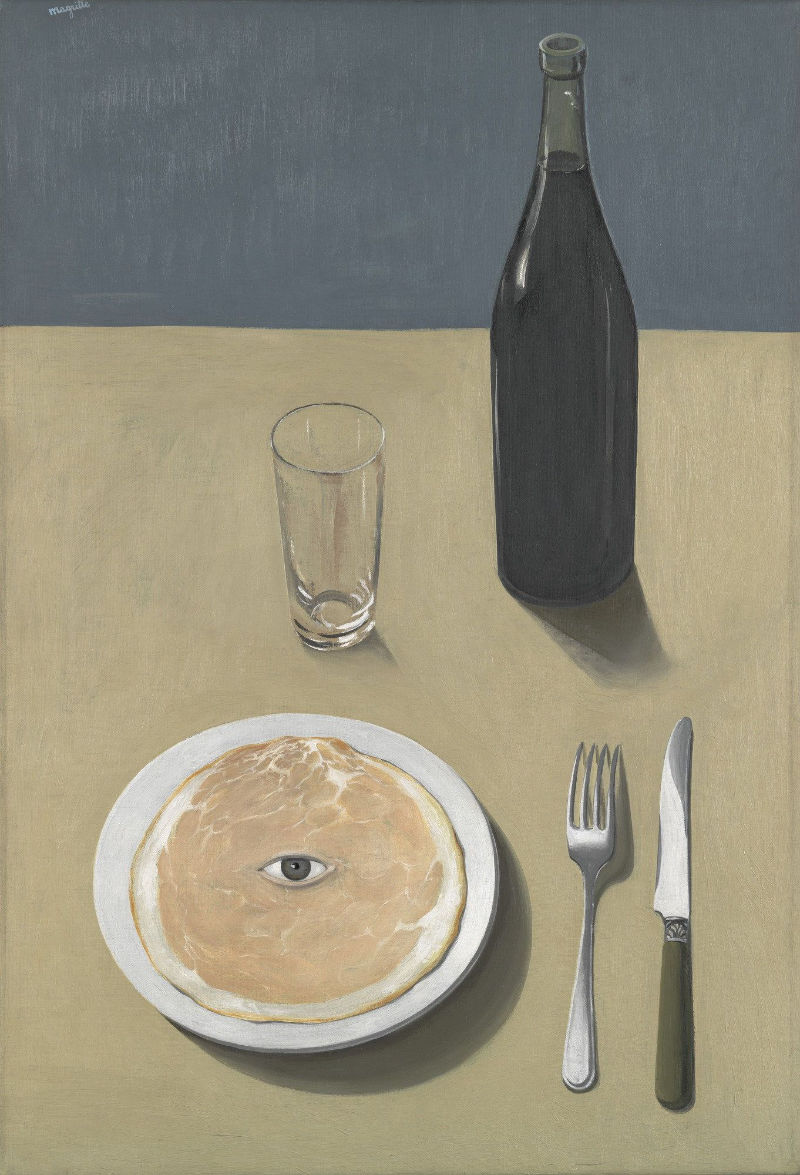
These startling juxtapositions can combine banal bits of reality. For example, René Magritte’s The Portrait from 1935 shows a human eye in the center of a slice of ham that’s presented to the viewer on a plate as part of a meal with table settings.
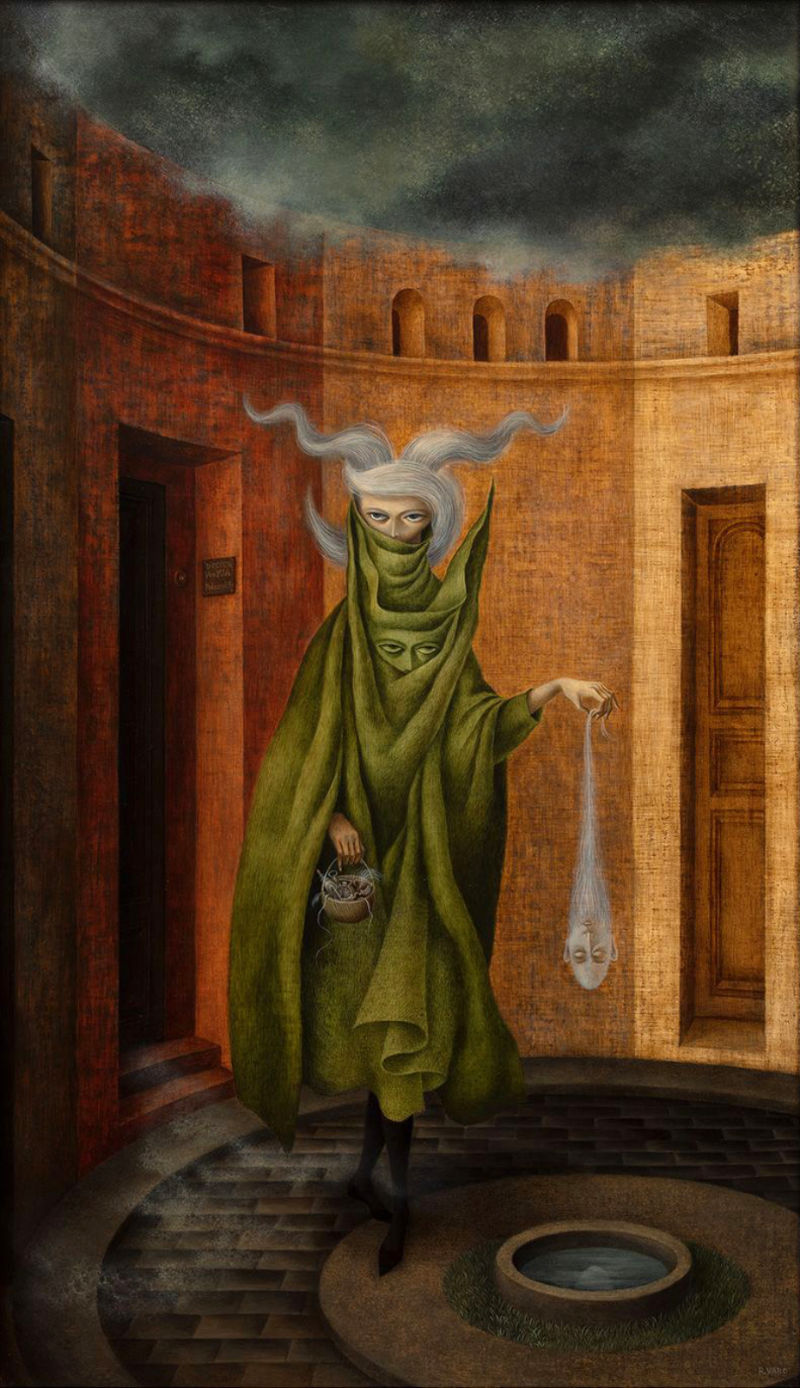
But some artists choose to push the juxtapositions further. For example, Remedios Varo’s Woman Leaving the Psychoanalyst (Could Be Juliana) from 1960 shows a woman—possibly named Juliana—leaving a therapy appointment, carrying the ghostly head of a man, with the end of his long beard held lightly between her fingers. This head may represent her emotional baggage, and she seems poised to drop it into a pool or well
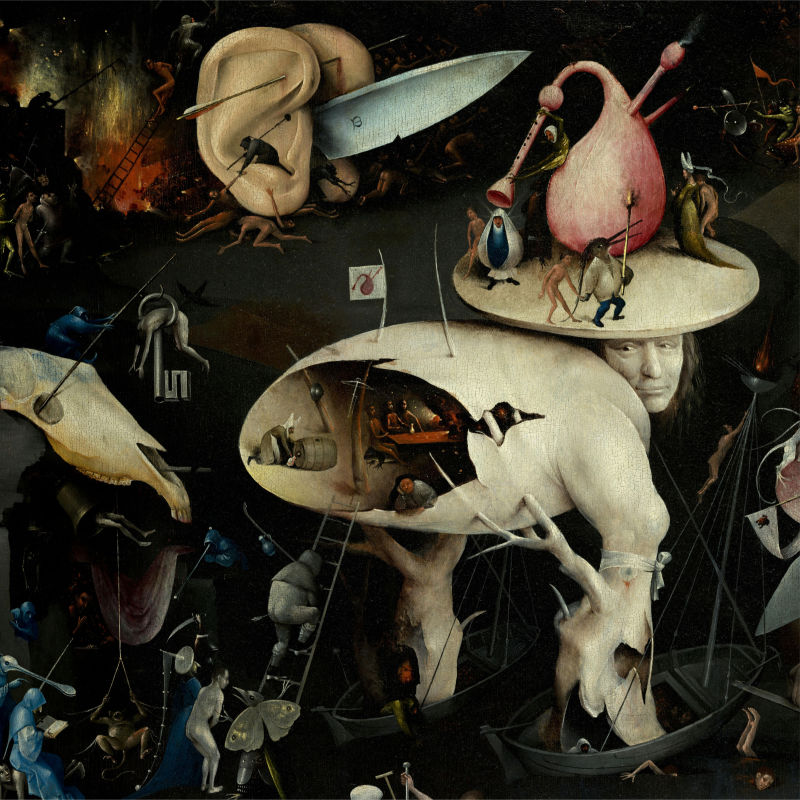
Of course, long before the term “surrealist” was coined, many artists toyed with the unusual juxtapositions of the surrealist aesthetic, including the 15th century painter Hieronymous Bosch. In his triptych The Garden of Earthly Delights, the right panel in particular revels in an irrationality that mirrors the dreamlike quality of the Surrealism of the 1920s. The central figure is half of a human with a hollowed-out torso that’s supported by limbs resembling trees, and this creature is inhabited by many smaller figures, human and otherwise.
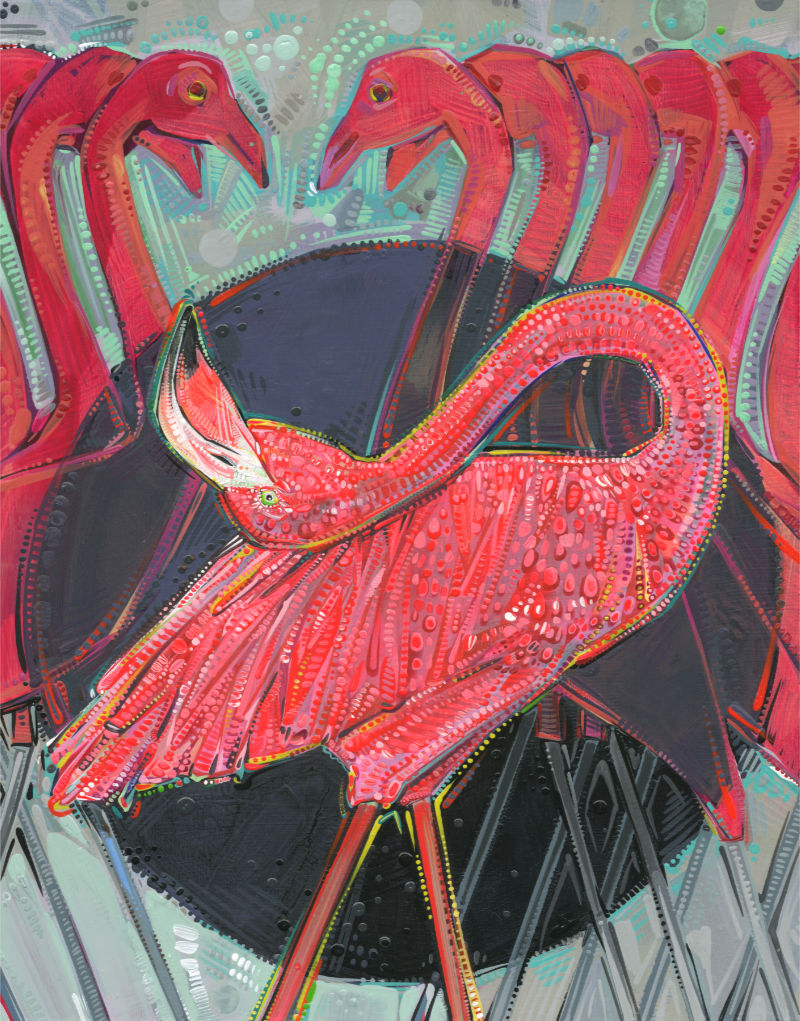
The Five Stages of Not Fitting In: Superior, Different, Weird, Wrong, Rejected
2022
acrylic on panel
14 x 11 inches
Unlike modern Surrealists such as Magritte who focused more on unlocking the unconscious mind, Bosch used unexpected juxtapositions to communicate something specific—in this case, what he thought hell might be like. The same might be true for Varo, who often visited The Garden of Earthly Delights at the Prado Museum, and it’s certainly the case for contemporary artist Gwenn Seemel, who often uses animals to stand in for them as they explore their struggles to relate to others. In their 2022 painting The Five Stages of Not Fitting In: Superior, Different, Weird, Wrong, Rejected, one real flamingo is flanked by lines of plastic ones.
Current iterations on Surrealism’s fascination with unexpected juxtapositions go beyond the art world and often include nonhuman animals, such as the talking dogs that are a favorite of TV ads or the smartphone filters that allow you to speak and emote as if you are a cat during a video chat. When you think about how often unusual juxtapositions crop up in contemporary life—down to the plush toy shaped like a happily halved avocado that has eyes and a smile—it starts to feel like we live in a world shaped largely by Surrealism.
ABOUT GWENN SEEMEL
- born 1981 in Riyadh, Saudi Arabia
- full-time acrylic painter since 2003
- famous for a polka-dot painting style
“The tiny dynamic marks that make up my art give it its unique look, but they’re also a direct representation of my main purpose as an artist. They’re a reminder that matter is energy—the only solid thing in this world is movement. I don’t want to live my life on the surface, forgetting that change is built into every particle. My paintings help me remember to keep searching for the deeper dynamic layers.”
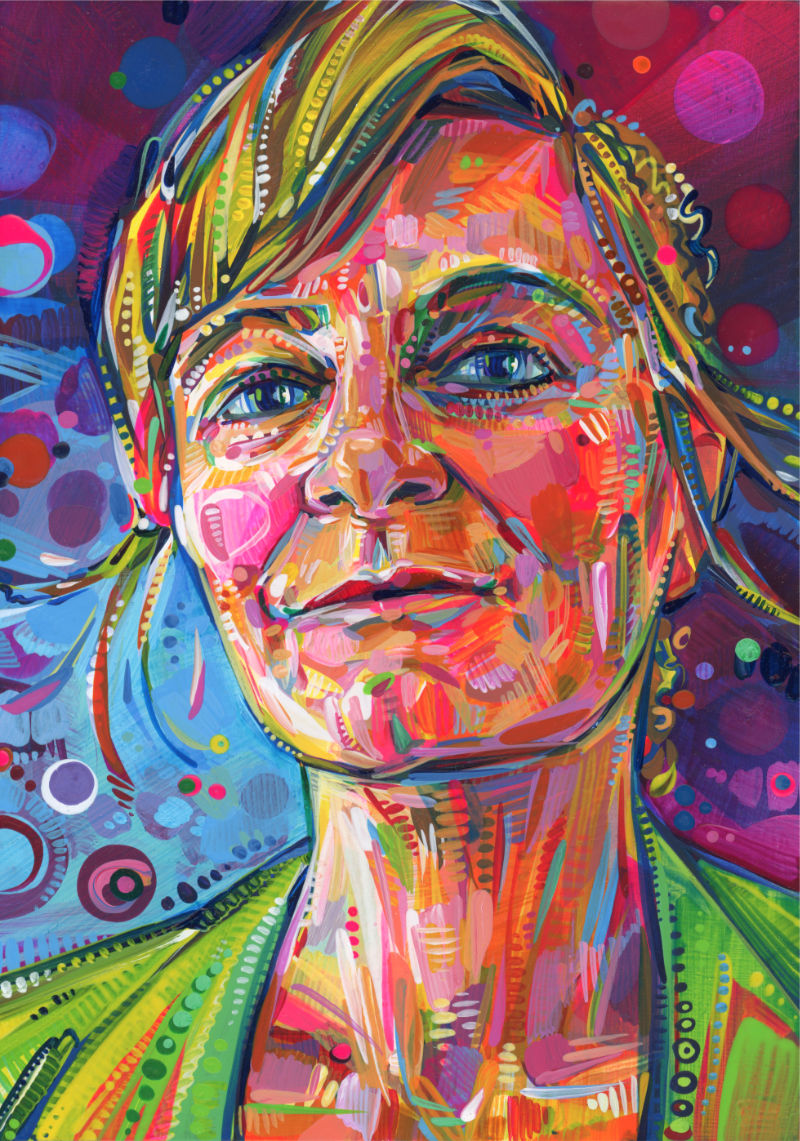
Self-portrait
2024
acrylic on panel
7 x 5 inches
Born in Saudi Arabia, Seemel is both French and American, and their bilingualism infuses everything they create with an extra layer of thoughtfulness. They earned their BA summa cum laude from Willamette University and launched their career in Portland, Oregon. They currently live in Lambertville, New Jersey.
Seemel doesn’t use Instagram, TikTok, or any other corporate social media platforms to share their art. They release all their work directly into the public domain, making it free for use by anybody without asking for permission first, and, in 2014, they were invited to Switzerland to give a TEDx talk about this unconventional choice. In 2023, they made their film début in the Belgian documentary Queerying Nature, and their work has appeared in Hyperallergic and Newsweek as well as on the cover of an Oxford University Press book.
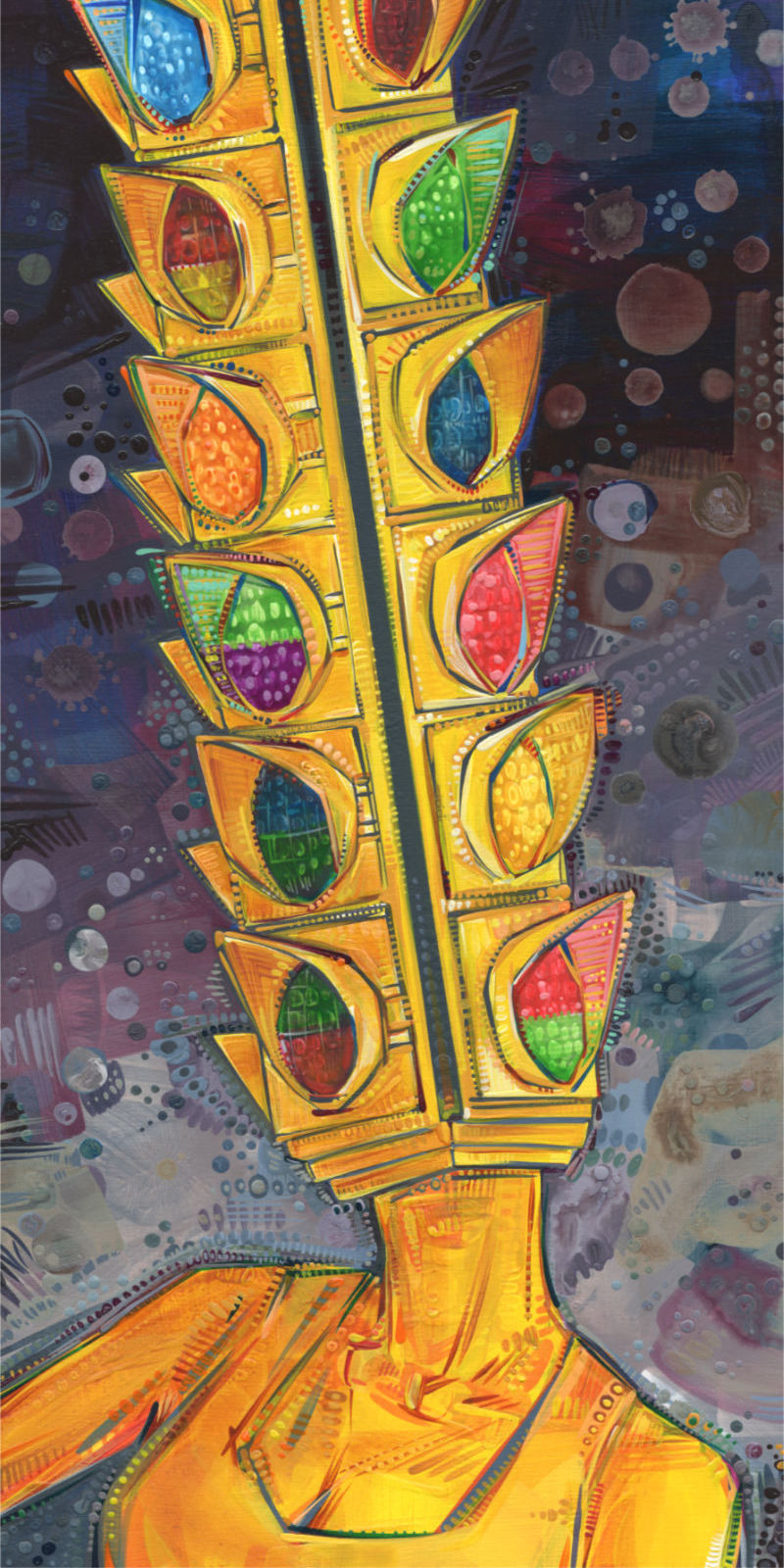
Yearn Signal
2021
acrylic on panel
20 x 10 inches
Though Seemel has used surreal touches in their work before, Everything’s Fine is their first full series using its dreamlike qualities to express themself. The collection is a series of self-portraits in which the artist depicts themself mostly as animals and plants, but also once as an extra tall traffic light in order to communicate something about who they are and about their frustrations with the pressures that society imposes on each of us.
LEARNING OBJECTIVES
- Understand the history of Surrealism and how it affects visual culture in the present.
- Communicate visually about a subject without simply creating a straightforward image of that subject.
- Reinvigorate self-portraiture by taking it back from the realm of selfies and emphasizing that it doesn’t have to focus on the student’s outward appearance.
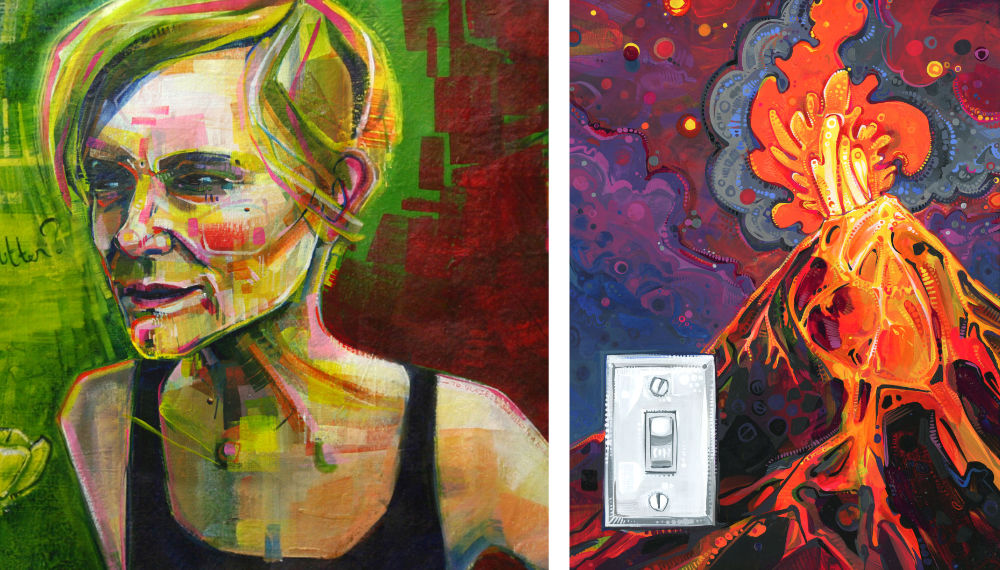
detail of Over Grown Up and Off
2006 and 2024
acrylic on unmounted canvas and acrylic on panel
22 x 20 inches and 16 x 12 inches
For example, while a student who wants to show that they feel anger might ordinarily create an image of themselves with their eyebrows knit together and their eyes glaring, the goal of this lesson is to challenge them to paint something like a volcano erupting with a heart made of lava instead.
MATERIALS
Teacher’s choice! The Surreal Self-portraits lesson can be successfully taught with pencils or markers, but paint, pastels, collage, or mixed media are also possibilities.
DELIVERY
- Start by explaining the history of Surrealism and leading a discussion about the unexpected juxtapositions that abound in culture today.
- Introduce Gwenn Seemel as a contemporary painter with an unusual style and then share Overthinker. Present the image without divulging the title, and lead a discussion with questions like these:
- How does the red rose seem to you?
- How about the grey one?
- What’s different between the two roses, besides the color?
- How does the thorny thought bubble make you feel?
- What do the three dots in the bubble mean?
- What are the elements of reality that Seemel juxtaposes in unexpected ways in this painting?
- What do you think they want to communicate with this painting?
- Ask students to title the painting. Discuss the titles, then share Seemel’s title with students, and ask how it changes their understanding of the painting—if at all.
- Reveal that this painting is a self-portrait, and lead a discussion about self-portraiture with questions like these:
- Why do artists create self-portraits?
- What information can a self-portrait give the viewer?
- How can a portrait show emotion without depicting a face or any part of a human figure?
- Show other examples from Everything’s Fine. The appendix contains info about the nineteen paintings in the series, including links to folders containing initial sketches and images of the works in progress.
- Share the Inspiration List (printable version available in the appendix) and explain how students might start by brainstorming their own list of animals, plants, human-made stuff, and emotions that they would like to make art about. The list will help them think about different combinations of elements as they design a surreal image that communicates something about their inner world and acts as a kind of self-portrait.
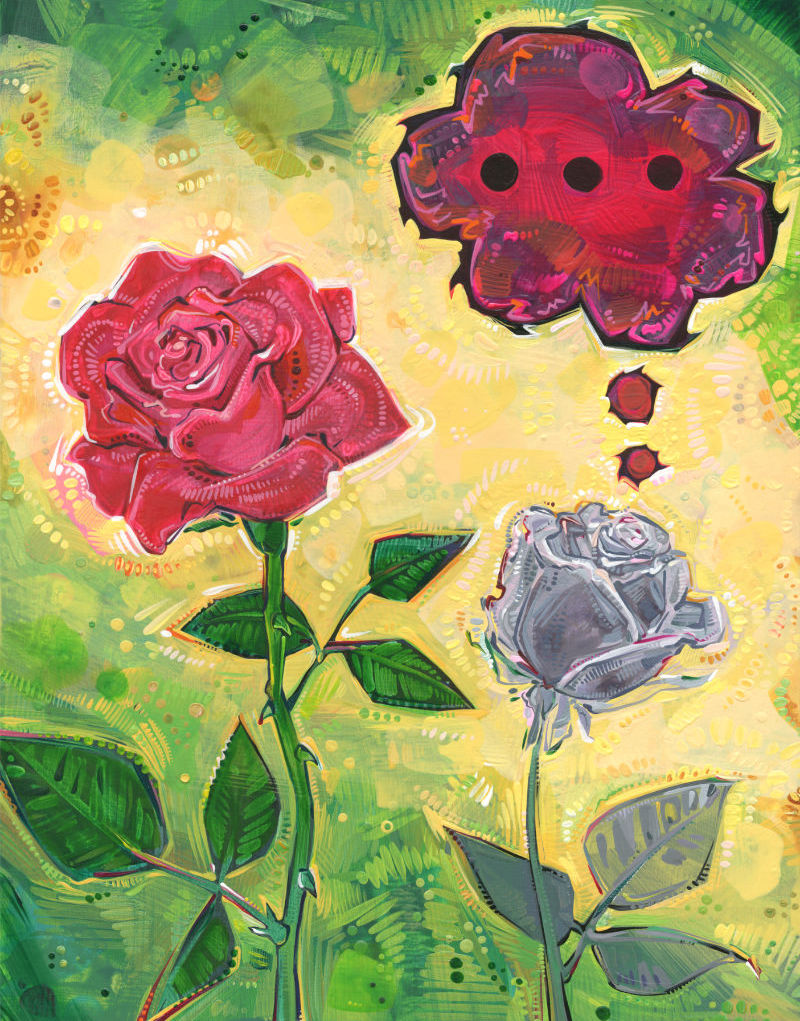
Overthinker
2022
acrylic on panel
14 x 11 inches
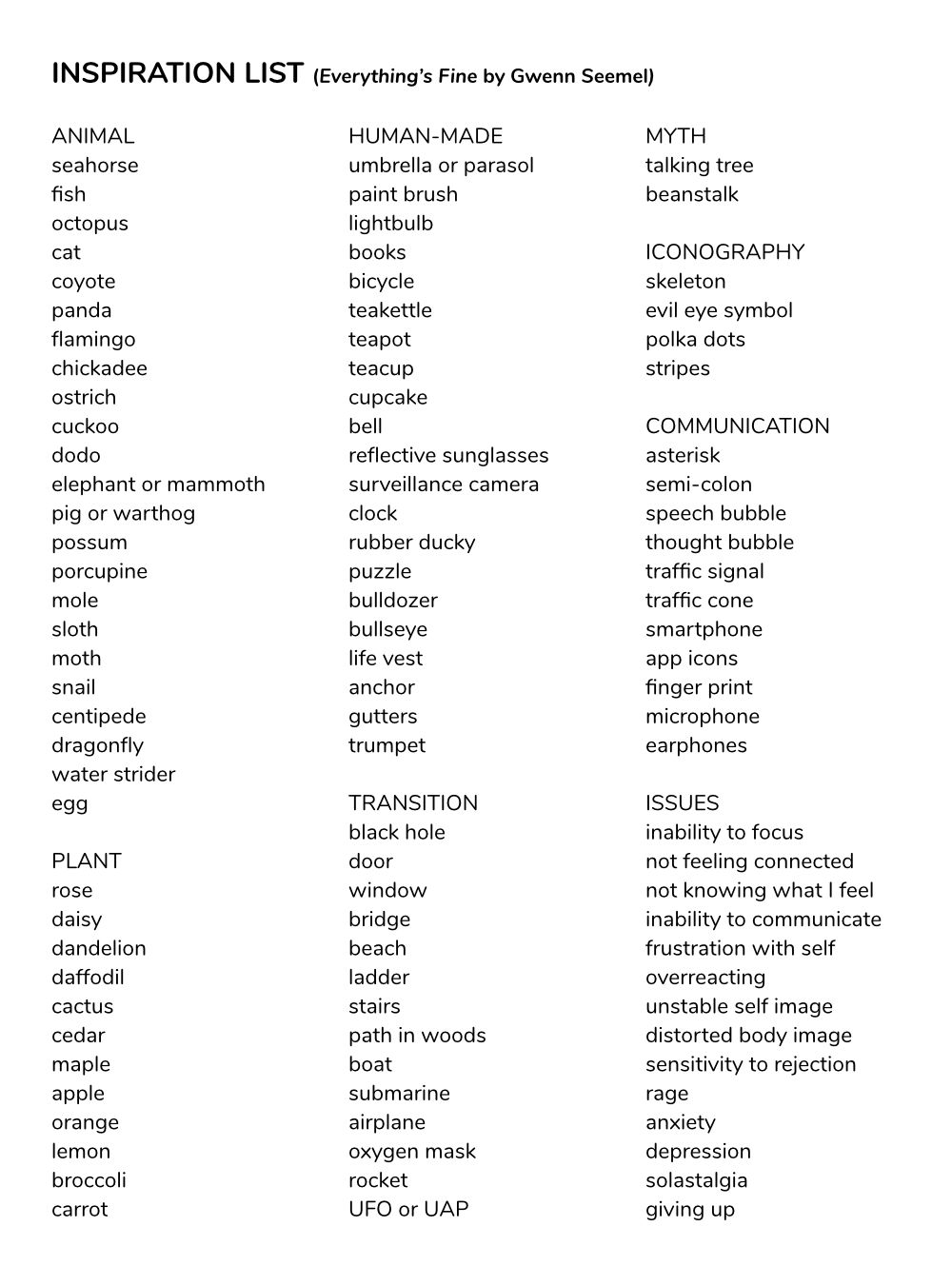
APPENDIX
This section of the lesson plan is only available in the free PDF. It contains tools for teaching this lesson, the bulk of which is dedicated to the nineteen paintings from Seemel’s surreal self-portrait series, Everything’s Fine. Each painting gets its own page, and each of these pages includes:
- previews of process images of the artwork
- a preview of the finished piece
- the artwork’s title, medium, and measurements
- a button linking to a folder containing larger versions of the images that are previewed on each page
- questions that encourage direct dialogue with the image
- more text and questions that reveal the artist’s intentions for the image
- a link to a video of the making of the artwork
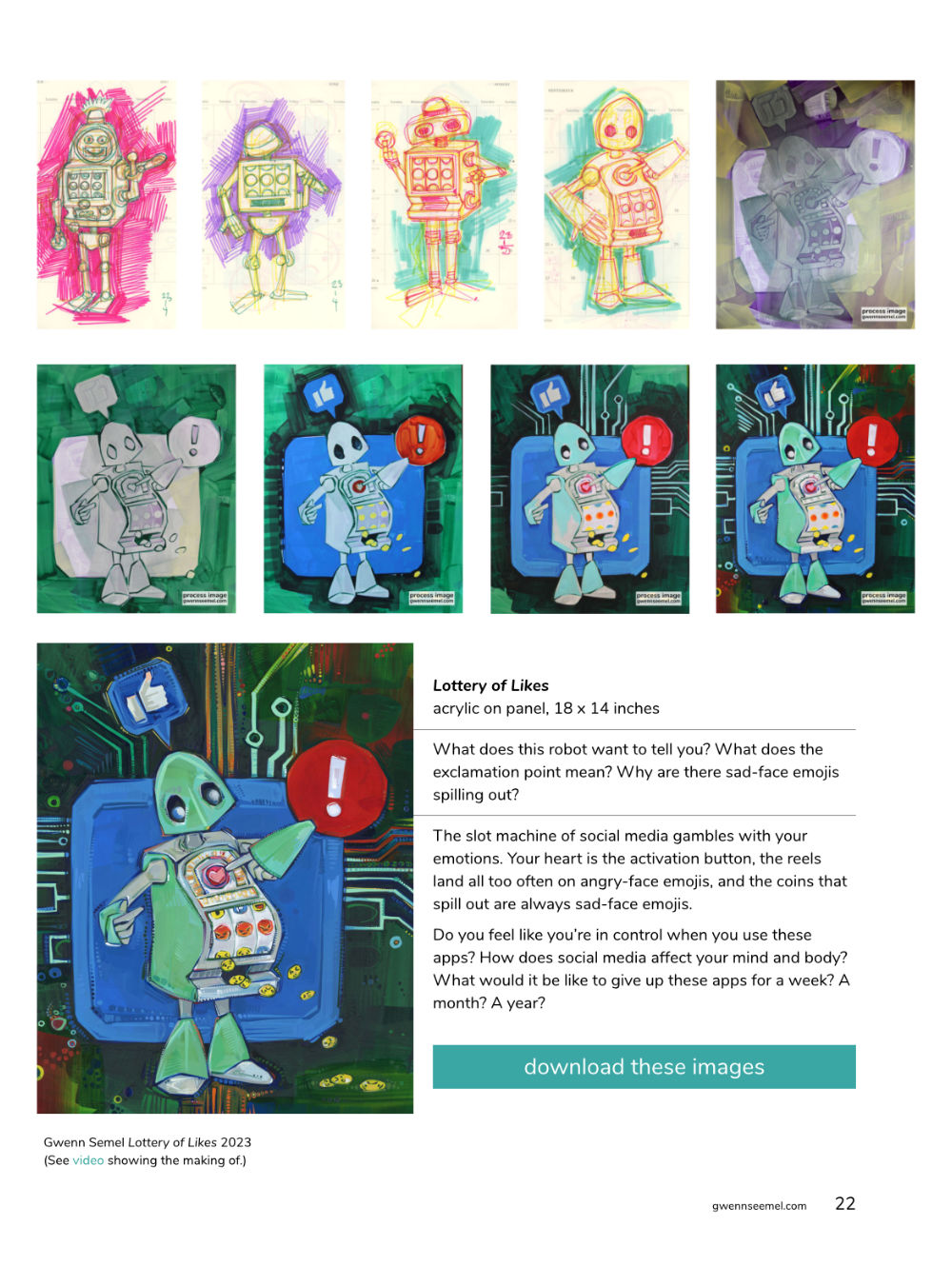
Download the appendix, along with the rest of the lesson plan, for free!
THANK YOU
This lesson plan is free because 78 lovely individuals supported its creation on Kickstarter and because the Puffin Foundation funded the project as well.